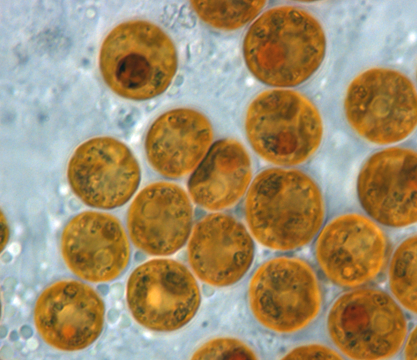
Durusdinium trenchii
Algae
Durusdinium trenchii is a dinoflagellate which lives as a symbiont in the tissues of cnidarians. These coral symbionts are known as zooxanthellae. When corals are subject to stress (temperature, sediment, low oxygen), they can expel their zooxanthellae, a phenomenon known as bleaching. Several genetic clades in the genus Symbiodinium were identified based on DNA sequences. One clade, clade D, was found to be particularly associated with corals exposed to high temperatures and other stresses. These species were moved to a new genus, Durusdinium. The genus Durusdinium is largely confined to the Indo-West Pacific. Durusdinium trenchii was described from Okinawa, and is now the only member of the genus known from the Eastern Pacific (Panama), where it is associated with an apparently introduced Caribbean coral (Siderastraea siderea). It may have been introduced with corals in ship fouling, in ballast water, or by the aquarium trade. Durusdinium trenchii is now widespread in the Western Atlantic from Florida to Panama and Curacao, and found in corals of many species. As corals in stressful habitats are often colonized or re-colonized by zooxanthellae of the genus Durusdinium, it has been characterized as a 'nugget of hope' for corals, but corals with this symbiont show reduced rates of calcification. There is ongoing research on the mechanisms of symbiosis, with the hope that genetic modification will enable corals to maintain their symbiotic relationships.
[The photo is of a Symbiodinium sp; the former genus of D. trenchii.]